You think fishing is easy? Well, you don't know jack; he gets 'hangry' | FISHING ROUNDUP
His name is Jack but you should probably call him Jethro.
Strong as an ox and nearly as smart.
Bites first and asks questions later. You know the type.
In some places, he’s listed as crevalle jack, in others it’s jack crevale — reverse the name, lose an L, and don’t ask questions. Usually, though, it’s just jack.
This time of year, unless you can get out when the sun is low and grab a tastier prize, jacks are a common catch. When they’re hungry, they’re hungry, downright maniacal, and heated water be damned.
We all have our jack stories.
Mine is a twofer.
Twenty-some years ago, my buddy Gus and I were in my little two-man skiff in the Halifax, freshly anchored by a spoil island across from the old La Paloma bowling alley in South Daytona, hoping for trout.
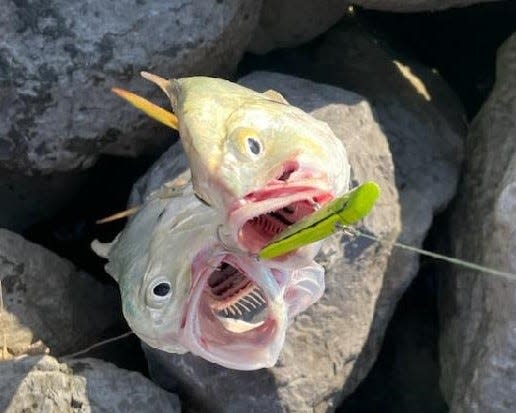
CASTING CALL What America needs is a president who knows how to cast a line
THE OTHER SNAPPER The mangrove snapper delivers a tasty positive to summertime in Florida
Gus had tossed a swimming plug toward the south and within a few seconds the water exploded with panicked baitfish. Before either of us could say, “Hope it ain’t jacks chasing ’em,” it was jacks. Plural.
Gus got in his workout and after a couple minutes raised a plug with a pair of attachments: One jack hanging from the front treble, another from the back.
It was maybe two weeks later when I was fishing from the dock under the Dunlawton bridge. Baitfish started swirling a bit, and a fellow docker, maybe 20 feet away, got a big hit. The fight was on and he was walking around the dock, trying to regain line whenever his drag quit singing.
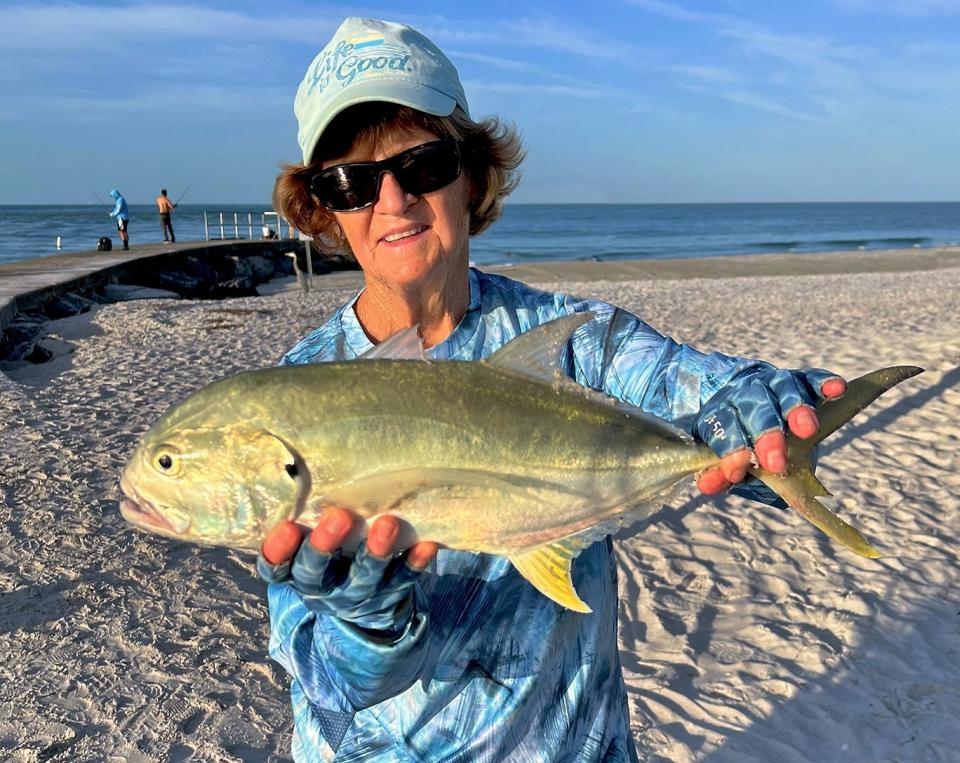
Now another guy nearby gets a strike. A big hit. One guy fighting over here, another over there, and over the course of about 30 seconds, they’ve inched toward each other and eventually they're shoulder to shoulder as they simultaneously win their battles … only to learn they’ve caught the same fish.
Yep, a jack, which devoured one piece of bait and found a hook, then launched into a frantic fight to free itself, only to see another piece of food floating by and figured, “why not?”
And there’s your anecdotal scouting report on jacks: A guy catches two jacks on one lure, and shortly thereafter two guys simultaneously catch one jack.
“Sometimes I’ve got to put up with them to find the game fish I’m targeting,” says Joe Yarbrough, longtime area angler who’d run his charter boat on weekends when he wasn’t busy managing the city of South Daytona. “That’s especially true during the mullet runs.”
With paying customers who expect to catch fish, a charter captain is smart to take advantage of a jack swarm before resuming the search for reds, snook, flounder, etc. But there are limits.
“With the price of croakers and pigfish, I’ll generally look for another spot,” Joe says.
When suspecting a jack attack, Capt. Billy Pettigrew (RedfishTails.com) is known to take advantage of it, but likes to take precautions — he knows the jack isn’t just a ferocious competitor, but a sore loser, and will thrash like hell once pulled from the water.
“If I’m using a swimming lure, I’ll remove the treble hooks and replace them with single hooks,” he says. “I don’t want a hook in my hand.”
If you’re inshore, itching for a fight and want to joust with a jack, Capt. Billy suggests finding some fast-moving, deeper water on an outgoing tide, perhaps where a creek is feeding back into the main channel.
On occasion, he says, he has removed all hooks from a topwater plug during a jack frenzy. He’ll cast it out amongst the mayhem just to watch the jacks attack it. If you catch enough fish over your lifetime, you can afford to toy with them at times — must be nice.
Notice how you haven’t read one line about the back end of this fishing experience? Nothing about the dinner plate, a broiler, deep fryer, lemon pepper … nothing? The jack isn’t just an acquired taste, to put it nicely, but labor-intensive.
If prepping instructions begin with, “... after bleeding the fish,” you might want to go to the market instead.
While a ladyfish — another blast to catch but not eat — is worth keeping for its cutbait, which a few of our better fish find delicious, the jack’s bloody, oily flesh is generally alluring only to another one of those fighters you’re not keeping.
“The jack for cutbait?” asks Capt. Billy. “Sure, if you want to catch a shark.”
Flagler
Flagler? Yep, we begin this week on the northside because we have another jack story to tell.
Ryan Pritt, my cohort on the weekly NASCAR This Week page and the News-Journal’s sports editor, now has his own two-for-one tale.
Ryan likes to fish favorable tides from the banks of Rattlesnake Island, around the bend from Matanzas Inlet. Last Friday came the text: “Been fishing 36 years and never seen this.” Then came the photo of two jacks hanging from a Got-Cha swimming plug — one from the front treble, one from the back.
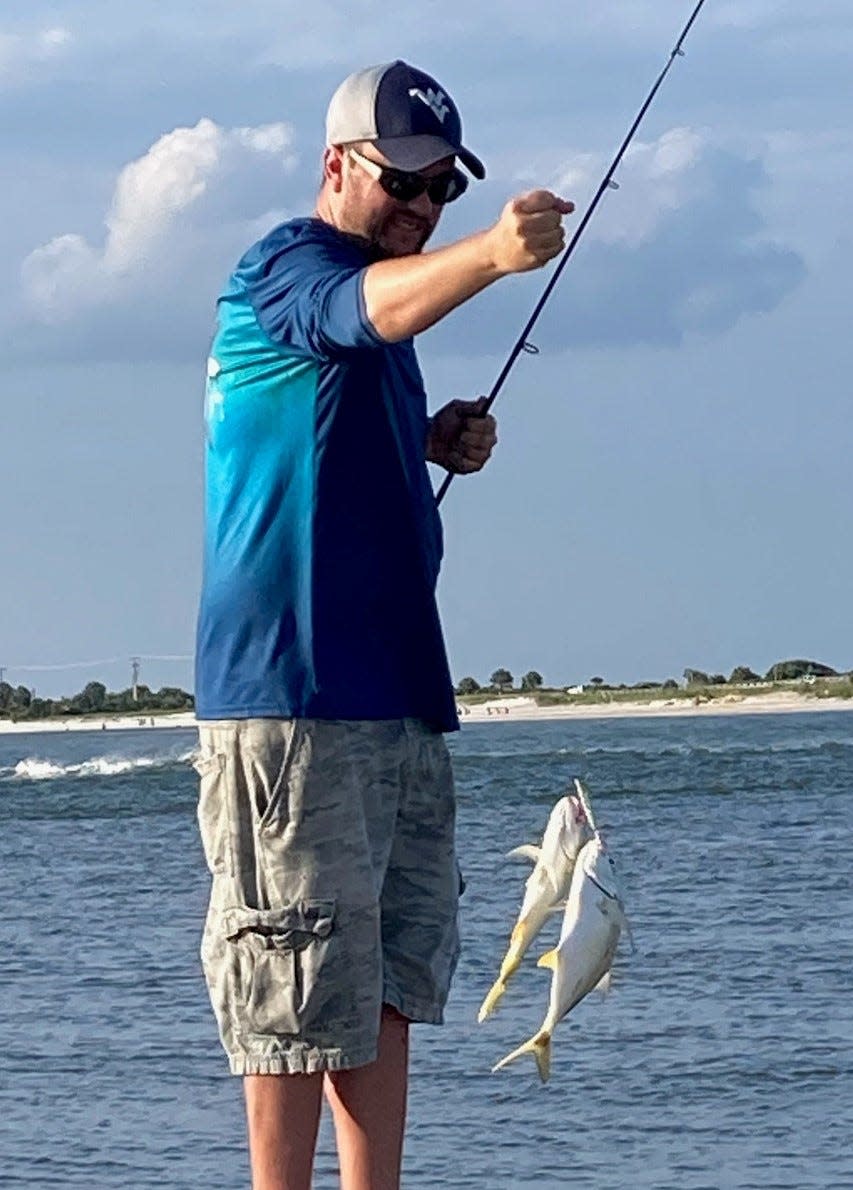
He might want to head back toward that hole again, because if you think the jack is a fighter, try battling the mighty tarpon.
“Big tarpon have moved into the Flagler area,” says Capt. Mike Vickers (Hammock Beach Bait Shop). “Several reports of tarpon over five feet long being hooked up.”
Capt. Mike says some meatier mangrove snapper (“some over three pounds") are being found throughout the river and creeks. Tripletails, too, which should be targeted near floating buoys in open water.
Along with the usual early-summer trends — reds feeding in the early a.m., trout and snook loitering under dock lights at night — Capt. Mike says “flounder are making a good showing in the creek mouths, creeks and flats."
Surf fishing on Flagler Beach has seen a rise in catches of permit — the pompano’s equally strong (and tasty) cousin.
Halifax/Indian River
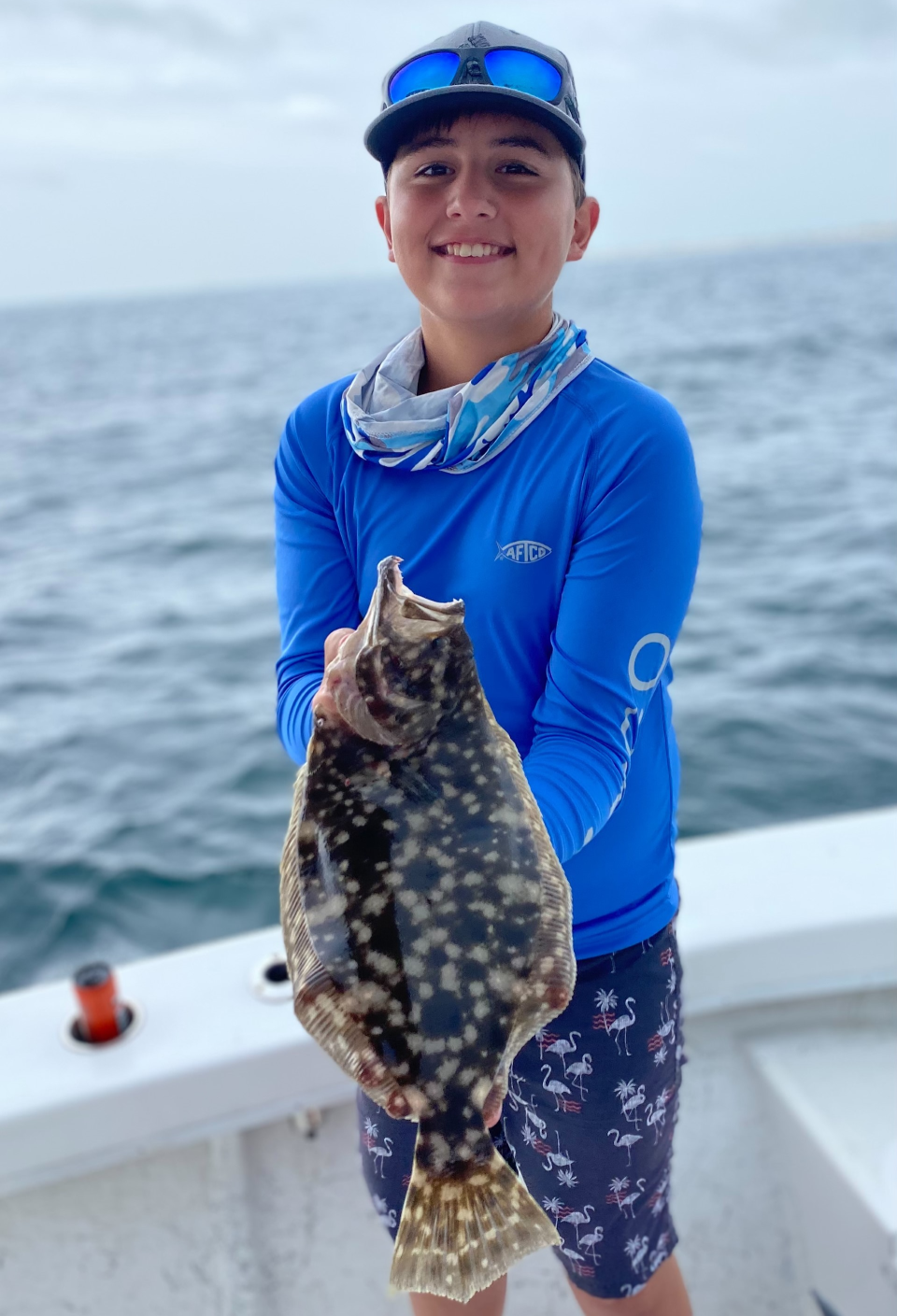
While a highly productive shrimp run has come and gone in the Oak Hill/Edgewater areas, the Halifax area of the intracoastal is now seeing lots of action.
Dip nets at night is the method for filling the cooler with “Oak Hill reds,” but the white shrimp of the Halifax are generally harder work — cast nets in the heat of the day.
Where there’s shrimp, there are fish.
“Summer flounder are in full swing,” says Craig Patterson (Donald’s Bait, Port Orange Causeway).
He also passes along some flounder-catching instruction.
“A one-ounce Carolina rig with a live mudminnow, hooked through the lips and dragged on the bottom where sandy areas meet pilings and other structure.”
Pinfish and croakers are occasionally grabbing the interest of the finicky tarpon, while Craig says pigfish are attracting some “nice trout” in and around a pair of ICW creeks — Fozzard’s and Mill.
More of the same from the past couple of weeks at the Granada Pier, where bait-shop operator Ike Leary says the best catches this past week have been black drum near the bridge.
“Along with mangroves,” he adds.
Capt. Jeff Patterson (Pole Dancer charter) confirms the summer flounder talk.
“The bite has been pretty good around the inlet and we’re getting some nice ones inshore, too,” he says.
Surf
Recall the mention of permit in the Flagler surf? Turns out, they’re not localized.
Marco Pompano tells us he’s targeting permit in D.B. Shores and Wilbur By The Sea these days, and why not — he says his friend “Pastor Paul” brought one to shore in Wilbur that weighed just a click under 20 pounds.
Redfish are livening up the surf scene, too. Sandfleas are great if you can find them, but crab knuckles are also a wonderful bait.
Offshore
Along with the usual offerings out among the reefs in deeper water, the nearshore is quite the party right now.
The bonito (some say bonita) is among the most migratory of Atlantic fish, and guess what, they’re doing some migrating just off our coast these days.
They’re joined by kingfish and tarpon, and not far beyond the breakers.
“They’ve been off the beach and some days easier to find if they’re on bait pods,” says Capt. Jeff Patterson, who has another suggestion and/or warning.
“Sharks are wide-open right now, so if you want to go after one, now is the time.”
St. Johns
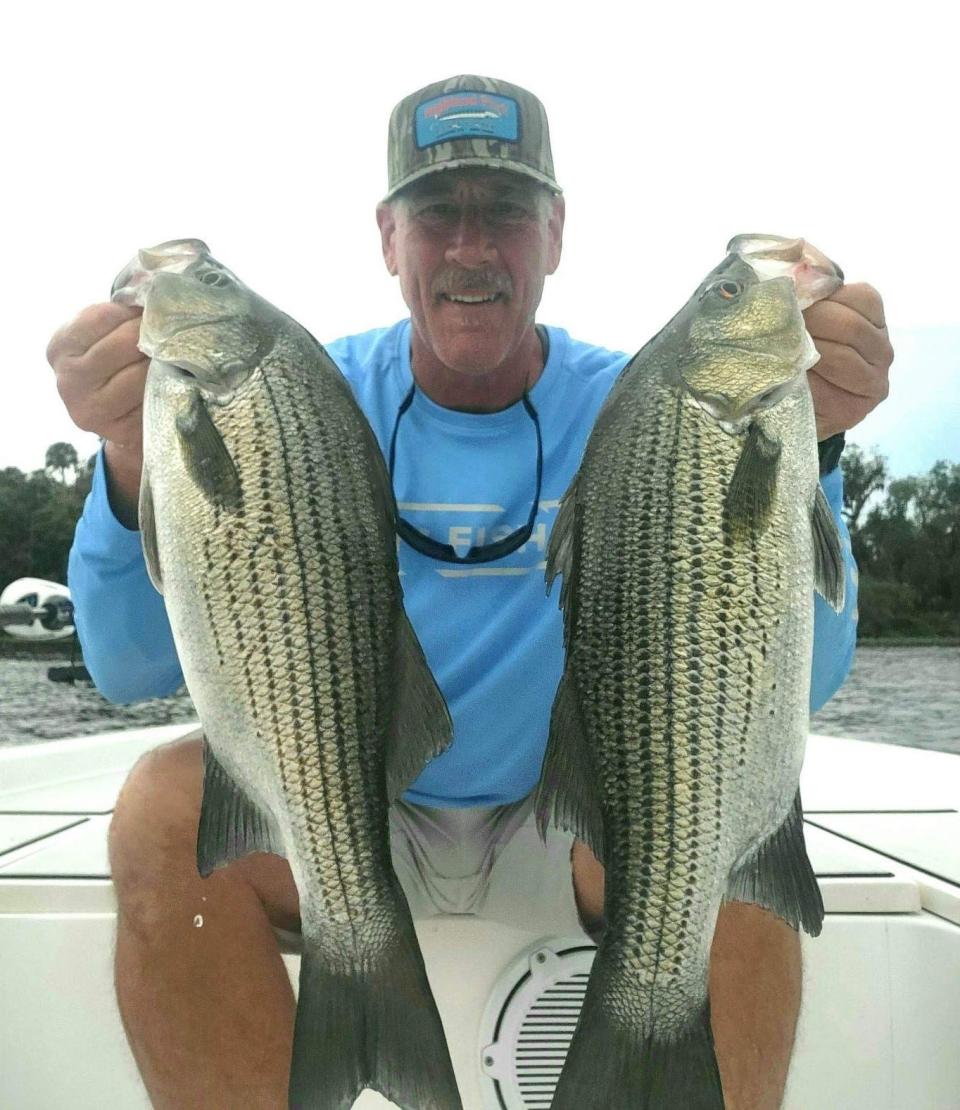
While the largemouth bass will always be the marquee catch, its striped and hybrid cousins are fun targets from about the midway point and north on the St. Johns, where the river turns a bit more brackish by the mile.
Both stripers and hybrids (a striper-white bass mix) are taking aim on topwater baits right now, says Capt. Bryn Adams (Highland Park). And as is custom this time of year, bluegill and shellcracker are still hopping into coolers — “use crickets and worms, and you almost can’t go wrong finding them,” she says.
“It’s important to utilize the first few hours of sunlight,” Capt. Bryn reminds us. “As the water temperature heats up, the fishing slows down.”
Veterans to the dock!
One more reminder about Saturday’s fifth annual Tom Lloyd Veteran Fishing Event at the Dunlawton pier in Port Orange. Check-in from 7:30 to 8 a.m., and fishing until noon.
Gear is available for those without. Proof of military service is required.
The event is organized by the Halifax Sport Fishing Club, and more info is available on the club’s website: HSFC.com.
Hook, line and clicker: Send us your fish pics
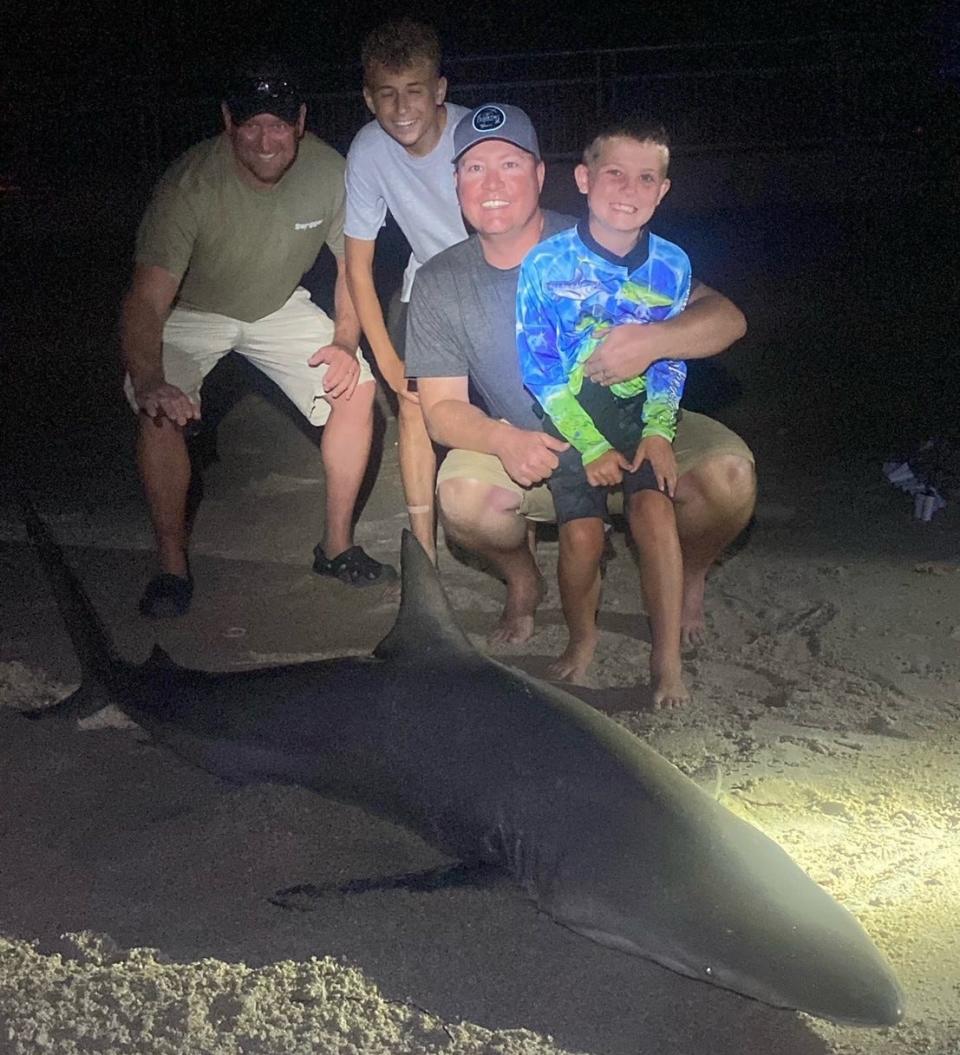
We want to see your most recent catch. Email your fish photos to ken.willis@news-jrnl.com.
Please include first and last name of angler(s), as well as type of fish (we're occasionally stumped). All are included with our online fishing report, and some occasionally make the print edition.
Do I need a fishing license?
You can find all the license info, including exemptions, on Florida's Fish and Wildlife Commission website: MyFWC.com. But the basics are: No: If you're 65 or older, 15 or younger, you don't need a license. No: If you're fishing with a licensed guide or charter boat, both of which purchase commercial licenses that cover their customers. Yes: Most everyone else, including visitors from other states. Yes: Even if you're a shore-based angler (shoreline, dock, pier, bridge, etc.). However: The shore-based license is free . . . But: You still need to register for that free license.
Where do I get a license and what does it cost?
Many bait shops sell licenses, as do the bigger retailers (Bass, Dick's, Walmart, etc.). Florida's FWC uses a third-party site for buying or renewing fishing licenses: GoOutdoorsFlorida.com. The cost: $17 for an annual license. Don't forget: Whether you're fishing fresh or saltwater, you need the specific license. Freshwater and saltwater licenses are both $17 annually.
I’m here on vacation, do I need a license?
Yes you do, and they're also available at GoOutdoorsFlorida.com or certain bait shops and big retailers. Cost: $17 for three days, $30 for seven days, $47 for a year.Also: Non-residents need to purchase that license even if they're just fishing from shoreline or shore-based structures. (Florida residents need that license, too, but they're free.)
This article originally appeared on The Daytona Beach News-Journal: A pair of jacks? Go fish! Also, panfish in St. Johns | FISHING ROUNDUP

